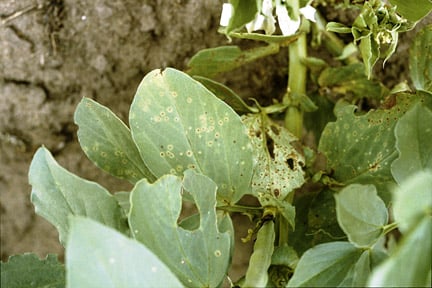
Quick facts
Common name - Broad bean rust
Scientific name - Uromyces viciae-fabae
Plants affected - Broad beans
Main symptoms - Small, dusty, dark brown spots on leaves and stems
Caused by - Fungus
Timing - Mid-summer
What is broad bean rust?
Broad bean rust is caused by the fungus Uromyces viciae-fabae. It is not as damaging as another common broad bean disease, chocolate spot , but severe attacks can cause defoliation. Expect to see significant levels of this rust from mid-summer.
It attacks broad beans, peas and other related legumes and has several distinct races, but in the UK is only important on broad beans. Runner and French beans are affected by a more serious, but unrelated rust disease.
Symptoms
You may see the following symptoms:
- On leaves and stems: Small, dusty, dark brown spots, often surrounded by a pale yellow halo
Control
Non-chemical control
- Maximise air flow around the plants by wider spacing and avoid damp, humid sites
- Destroy infected plant material, because spores produced at the end of the season can survive in a semi- state in crop residues and on seed
Chemical control
There are no fungicides available to gardeners for disease control on broad beans.
Biology
Uromyces viciae-fabaeis a typical example of a rust fungus that carries out its entire life cycle on one host, which, in the UK, is the broad bean. Unlike chocolate spot, the infected leaf tissues remain alive, providing for the fungus while it produces dusty brown airborne dispersal spores. A semi- resting spore carries it over the winter.





